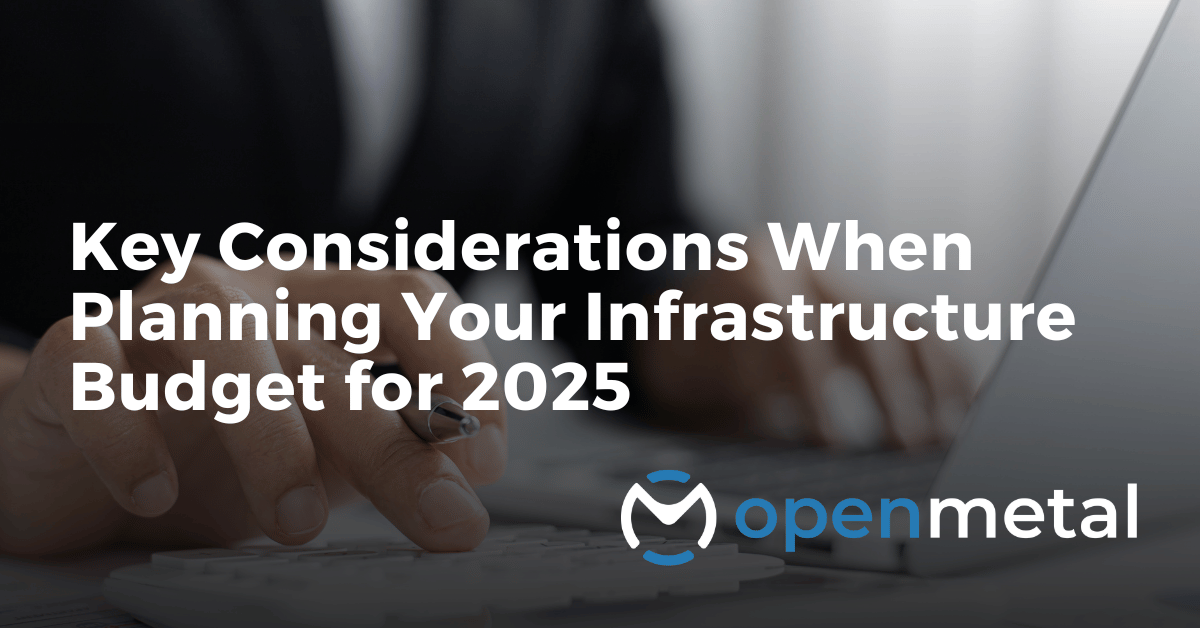IT Budgeting for 2025: Managing Costs and Maximizing Value
2025 is fast approaching, and your IT budget has never been more important. Businesses are leaning harder into digital transformation, and if you’re not keeping up, you are falling behind. According to a recent Forrester survey, 91% of tech leaders plan to increase their investments in the coming year. Why? Because the stakes are higher than ever.
Planning your infrastructure budget is about more than business costs. It’s about aligning IT budgets with organizational goals, scaling smoothly, staying ahead of cyber threats, and leveraging the latest technology to drive growth. Whether you are thinking about cloud expansion, modernizing outdated systems, or maximizing security, the right infrastructure budget makes all the difference.
In this guide, we’ll walk through the key things to consider when planning your infrastructure budget for 2025.
Understanding IT Budgeting
Definition and Importance of IT Budgeting
IT budgeting involves planning for known and unexpected IT costs, allocating those funds smartly, and managing an organization’s financial resources. Today’s business landscape is technology-driven, and a well-structured IT budget is crucial for sustainable growth and efficient resource allocation.
By creating a financial plan that outlines spending on IT-related initiatives, projects, hardware, software, personnel, and other expenses, businesses can make informed decisions that support their overall strategy. A strategic IT budget not only helps in managing costs but also ensures that your organization is well-prepared to leverage technology for competitive advantage.
Define Your IT Infrastructure Needs
Before diving into your 2025 IT budget, it’s essential to get a clear picture of what your existing infrastructure truly needs. For this, it is important to identify the core components of your hardware and software systems, audit your current setup, and define your scalability and business growth goals.
- Identify core components: Identify the core components of your infrastructure: hardware, software, and network connectivity. What do you already have in place? What needs updating? From servers and storage to security systems and applications, you need to ensure that each piece of your IT setup is still serving its purpose.
- Assess current state: Conduct a thorough audit of your existing equipment. Look for outdated or underperforming components that may need replacing. An old server or outdated software can slow everything down and increase maintenance costs.
- Align with business goals: Your IT budgeting should be closely tied to your business objectives. Is your current setup scalable? As your business grows, you will need systems that can keep up with higher demands. Make sure your infrastructure can support future expansion, increased user demands, and new technologies.
- Legacy System vs. Modernization: If you’re still running legacy systems, it might be time to modernize. Research shows that companies investing in modernization can reduce operational costs by up to 20% over five years. Upgrading to more efficient systems not only improves performance, it also cuts down on ongoing maintenance and frees up resources for innovation.
The IT Budgeting Process
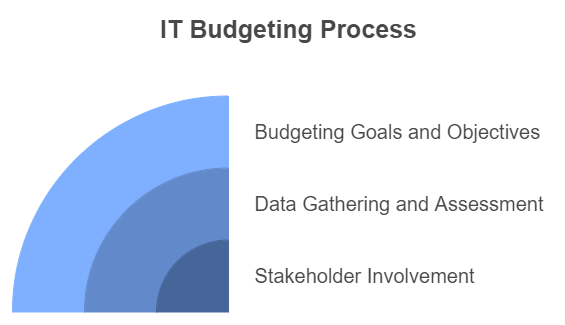
Establishing Budgeting Goals and Objectives
The first step in the IT budgeting process is establishing clear budgeting goals and objectives. This involves understanding the overall business goals and strategies to identify how IT can support these objectives.
IT managers should pinpoint key priorities for the upcoming year, guiding decisions on where to save costs and where to allocate significant investments. These goals and objectives should align with the organization’s overall business strategy and adhere to the SMART criteria – specific, measurable, achievable, relevant, and time-bound.
By setting clear goals, businesses can ensure that their IT budget is focused on initiatives that drive growth and efficiency.
Gathering Data and Assessing Current IT Infrastructure
Gathering data and assessing the current IT infrastructure is a critical step in the IT budgeting process. This involves taking a comprehensive inventory of all IT assets, including hardware, software licenses, subscriptions, and maintenance contracts.
IT managers should evaluate the condition and performance of existing infrastructure to identify areas that require upgrades or replacements. This data-driven approach helps in pinpointing where costs can be optimized and where investments are necessary to support business growth.
By understanding the current state of IT infrastructure, businesses can make informed decisions that enhance efficiency and performance.
Involving Key Stakeholders in the Budgeting Process
Involving key stakeholders in the budgeting process is essential to ensure that the IT budget aligns with business objectives and meets the needs of all departments. This includes IT managers, finance teams, department heads, business executives, and other key stakeholders.
By understanding the priorities of different stakeholders, the IT budget can be aligned with the overall organizational strategy. Collaboration and communication among stakeholders ensure that the IT budget is comprehensive and effective in supporting business goals. Engaging stakeholders in the budgeting process fosters a sense of ownership and ensures that the budget reflects the collective vision of the organization.
Key Components of IT Budgeting: Breakdown of Costs

When it comes to IT budget planning, it is essential to account for both direct and indirect costs. Direct costs are easier to track, like hardware purchases or cloud services, but it is often the hidden costs – such as maintenance or energy – that can impact your bottom line.
Let’s break down the key components to ensure you cover all necessary aspects.
Hardware Costs
Hardware costs cover essential equipment like servers, storage, and networking devices. This includes upfront purchases and ongoing maintenance. For businesses with on-premises data centers, regular hardware upgrades are crucial to avoid performance issues. Every 3-5 years, businesses typically replace or upgrade equipment to keep up with technological advancements and ensure smooth operations. Tracking these assets using fixed assets software helps streamline inventory management, monitor depreciation, and plan timely replacements—ensuring smoother operations and more accurate budgeting.
Cloud Costs
Cloud services charge based on how much you use for computing, storage, and data transfers. The flexibility is great, but costs can add up if not monitored carefully. Without proper management, expenses like data transfer fees can creep up.
Licensing and Software
Proprietary software licensing fees are a necessary but often hefty part of your budget. Annual renewals for software can quickly add up. On the other hand, open source solutions offer significant cost savings while still providing robust functionality.
Personnel and Managed Services
Personnel costs include hiring and maintaining IT staff like cloud architects and network engineers. These roles often require high salaries, making them a significant investment. For companies seeking to lower in-house costs, Managed Service Providers (MSPs) offer a solution by taking on day-to-day infrastructure management, allowing businesses to stay agile without needing to build a large internal team. Organizations that need strategic technology leadership without the cost of a full-time executive often turn to fractional CIO services to guide infrastructure investments and align IT spending with business objectives.
Energy and Data Center Costs
On-premises data centers can drive up energy costs, particularly with power-hungry servers and cooling systems. Expenses related to these often account for 5-10% of the total IT budget.
Networking and WAN/LAN Connectivity
Investments in technologies like SD-WAN are essential to ensure secure, fast connectivity between locations. Tools like VPNs and dedicated bandwidth are critical to maintaining reliable communication channels, but they come with additional operational costs that should be factored into the IT department budget.
Security
Cybersecurity is non-negotiable, and the costs related to security measures include investing in firewalls, endpoint protection, regular security audits, and compliance measures. As threats evolve, so must your security strategy.
Expert Tips for IT Budgeting Process for 2025
When planning your IT budget for 2025, it is important to be strategic and thorough, ensuring that you allocate funds where they will deliver the most impact. Comparing actual spending against the planned budget is crucial to identify discrepancies and make necessary adjustments. Below are key expert tips to guide your IT budgeting approach:
Prioritizing High Availability and Resilience
Ensuring high availability and resilience in your infrastructure is crucial to maintaining uninterrupted service. Downtime can damage customer trust and lead to significant financial losses.
Investing in redundancy, autoscaling, and failover systems helps keep your infrastructure responsive during peak demand and quickly recover from any disruptions.
Implementing and regularly testing a disaster recovery plan is equally important, ensuring your business can bounce back from unexpected outages with minimal impact.
Cloud vs. On-Premises Infrastructure Costs
When weighing cloud vs. on-premises infrastructure, the decision comes down to flexibility versus control. Cloud-native infrastructure platforms offer businesses the flexibility of scaling up or down as needed, with variable costs based on usage. This eliminates the large upfront capital expenditure (CapEx) associated with building and maintaining physical infrastructure. However, cloud costs can balloon if not monitored closely. On the other hand, on-premises systems have fixed CapEx but often come with higher long-term maintenance and energy costs.
Expert advice: A hybrid model, which leverages both cloud and on-premises infrastructure, can provide the best of both worlds. Start by shifting non-critical workloads to the cloud to manage costs while keeping critical, sensitive data on-premises for greater control. Monitoring tools are essential to track cloud usage and prevent unexpected cost overruns.
Security Investments for 2025
As cyber threats grow more advanced, businesses must prioritize comprehensive security measures in their 2025 budgets. Standard defenses like firewalls are no longer enough – invest in Zero Trust architecture, intrusion detection systems, and endpoint protection to defend against sophisticated attacks.
Regular audits and penetration testing are crucial for identifying vulnerabilities, and implementing multi-factor authentication (MFA) can further secure sensitive access points. A proactive, multi-layered security approach will ensure your business stays protected as threats evolve.
AI and Automation Costs
As AI and automation technologies become integral to business operations, investing in the right IT infrastructure is essential. AI-driven systems can help automate up to 30% of manual tasks, boosting efficiency and reducing labor costs. However, AI infrastructure, including GPU investments and cloud-based AI services, requires careful budgeting.
Additionally, automating processes in DevOps, such as continuous integration and deployment, can significantly lower management expenses over time.
FinOps and SecOps for Cost Optimization
Combining FinOps (financial operations) and SecOps (security operations) is key to keeping infrastructure costs in check while maintaining strong security. FinOps practices help you monitor and optimize cloud expenses by aligning financial management with IT. This ensures you are not overpaying for unused resources. At the same time, SecOps integrates security into every layer of infrastructure management, preventing costly breaches.
Vendor and Software Licensing Costs
Vendor and licensing costs can quickly add up, but managing them strategically can save money. Consider using open source software where possible to reduce expenses without sacrificing key functions. Negotiate long-term contracts to lock in better rates, and regularly audit your software usage to avoid paying for unused licenses.
Planning for Emerging Technologies
As technology rapidly evolves, budgeting for emerging innovations is critical for staying competitive in 2025. Edge computing, quantum computing, and AI advancements will play a significant role in shaping business operations. Allocate funds for experimenting with these technologies, as early adoption can provide a competitive edge.
Sustainability initiatives are also increasingly important, with green IT strategies influencing infrastructure decisions.
By planning ahead, you ensure your business is ready to leverage these innovations and integrate them effectively into your existing infrastructure.
Contingency planning
Unexpected challenges like economic shifts, inflation, or supply chain disruptions can greatly impact your operating expenses and cash flow. It is essential to allocate a portion of your year’s budget for expenses related to contingencies to handle these unforeseen circumstances. This extra buffer can help cover unexpected expenses or rapid technological changes.
Additionally, factor in compliance requirements and regulatory risks to avoid penalties. A well-prepared contingency fund ensures your business can adapt quickly and maintain smooth operations even in unpredictable situations.
Final Thoughts
Strategic IT budgeting is not just about keeping up with technology – it is about positioning your business to thrive in a fast-changing digital landscape. By embracing AI and automation, optimizing costs with FinOps and SecOps, and staying mindful of emerging technologies, you ensure your business remains competitive and adaptable.
Ultimately, a well-thought-out IT budget is more than just numbers on a spreadsheet – it is a tool that ensures your business strategy is prepared for the future. With these tips and careful cost management planning, you will not just survive the challenges of 2025 – you will thrive in them.
Want to explore our on-demand hosted private cloud for your 2025 infrastructure upgrades?
Questions? Contact us.
Read More on the OpenMetal Blog
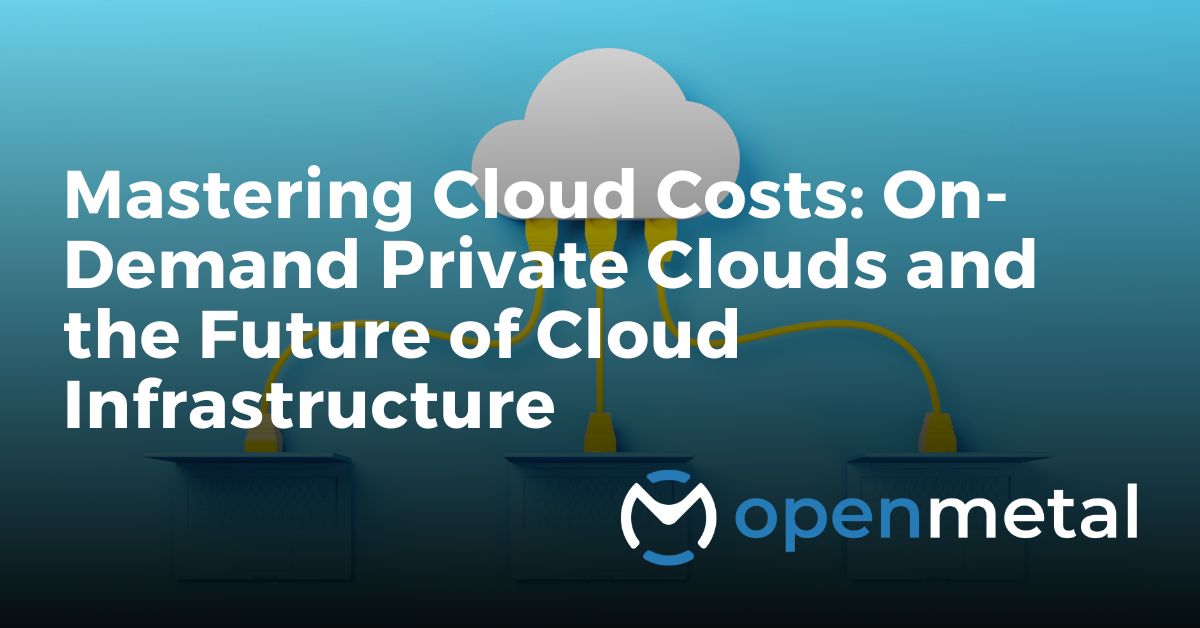
Mastering Cloud Costs: On-Demand Private Clouds and the Future of Cloud Infrastructure
With the growing popularity of cloud services, organizations are continuously looking for ways to optimize costs and improve their IT infrastructure. Explore the evolution and benefits of on-demand private clouds and alternative cloud infrastructure solutions, and how they can maximize ROI for many businesses.
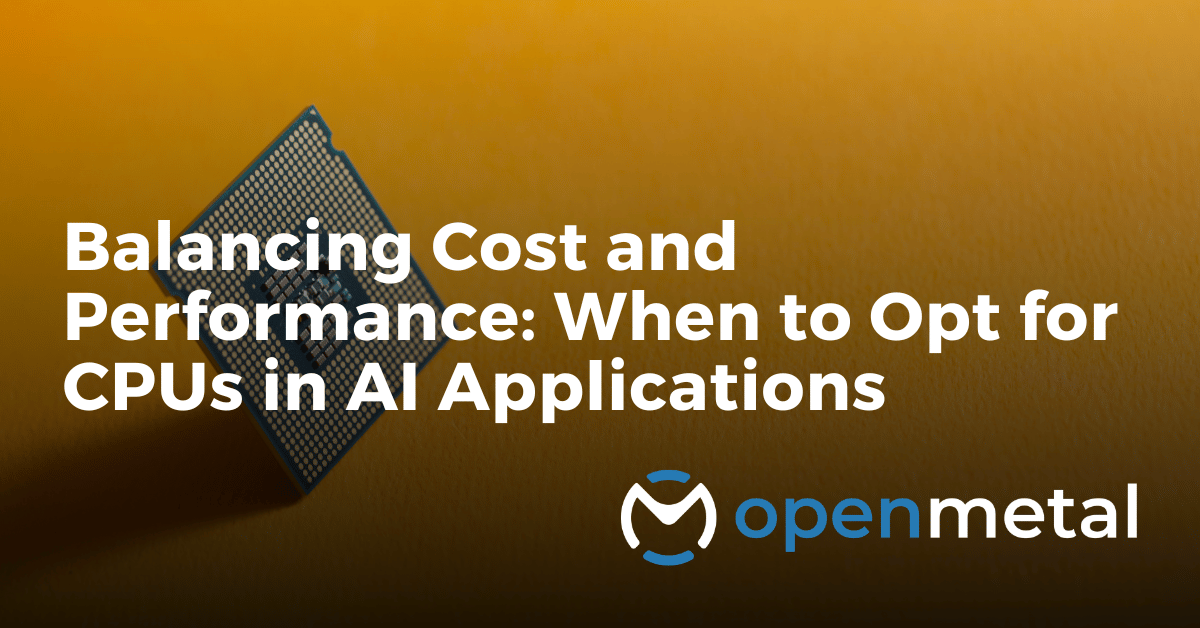
Balancing Cost and Performance: When to Opt for CPUs in AI Applications
When it comes to raw performance metrics, GPUs often lead the pack. Their architecture is specifically tailored for the high-speed, parallel processing demands of AI tasks. We’ll explore scenarios where CPUs might not only compete but potentially gain an upper hand, focusing on cost, efficiency, and application-specific performance.
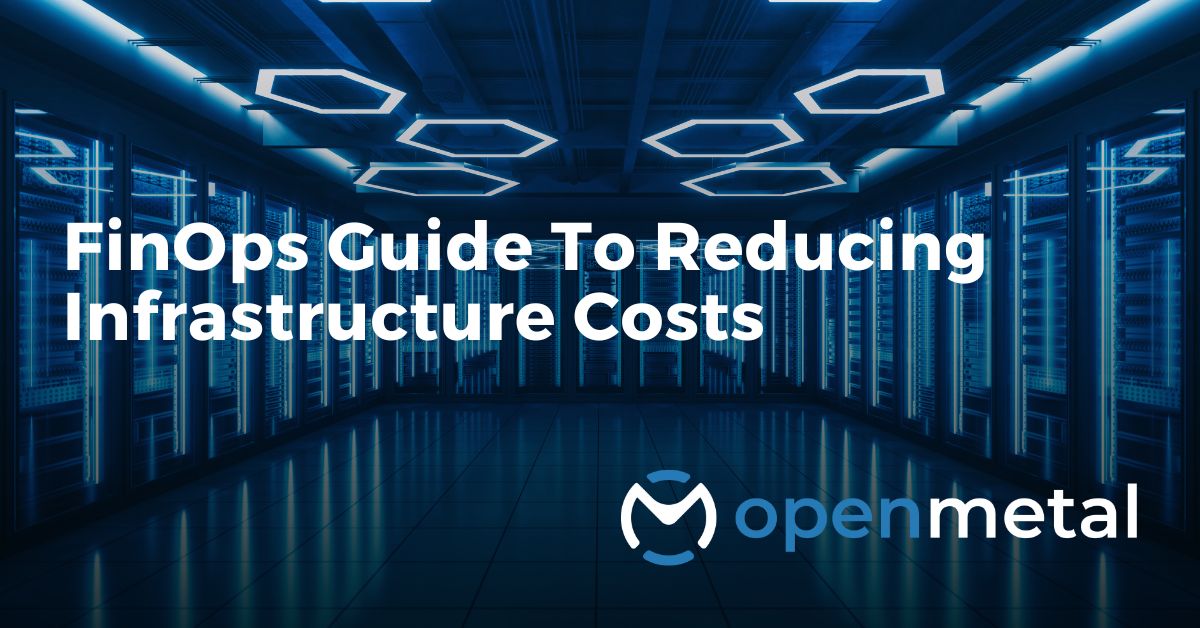
FinOps Guide To Reducing Infrastructure Costs
There’s no provider that guarantees the best ROI across the board. The best provider for your workload will depend on your workload size, requirements, expertise of your in house technical team, budget, etc. In this blog we will explore various cloud solutions and what workloads they may be best suited for.



































